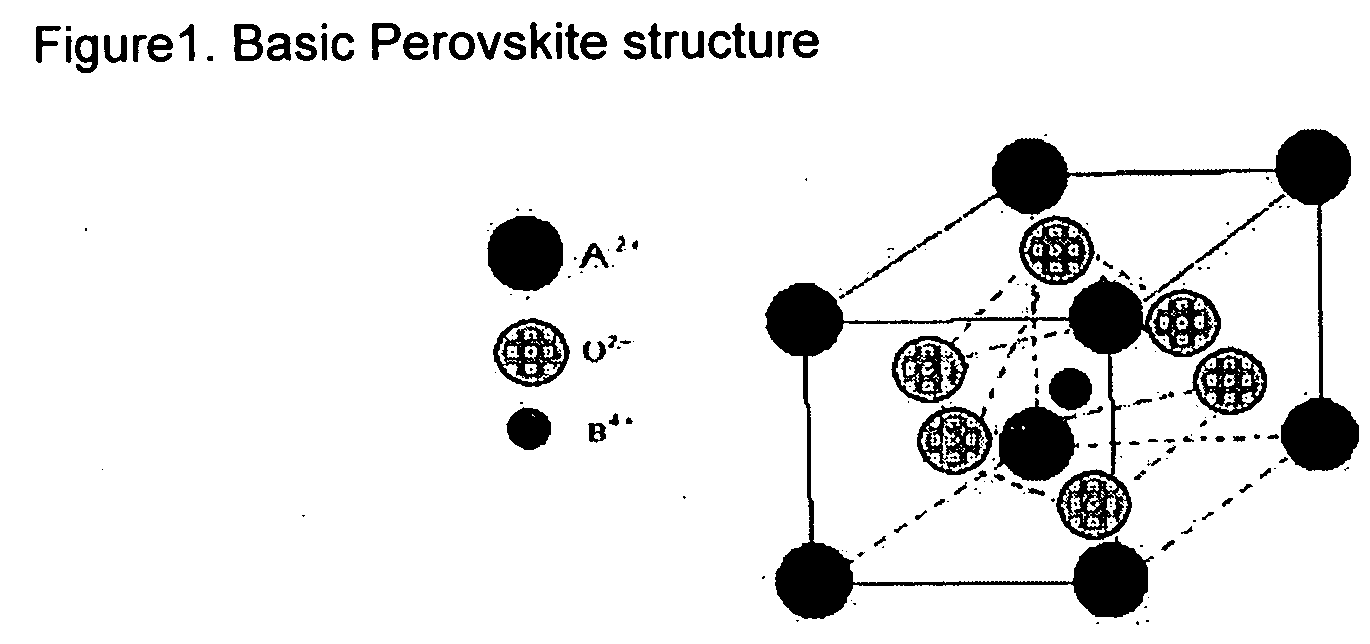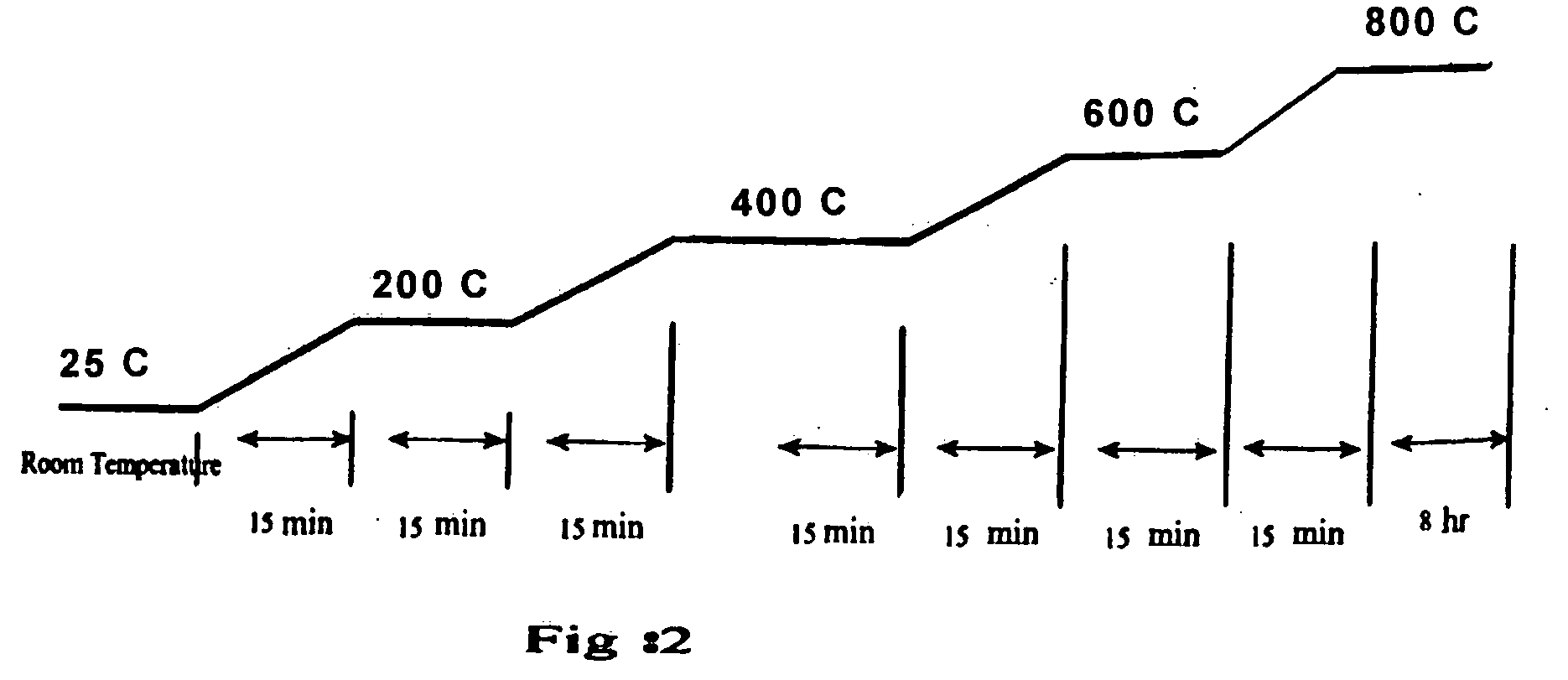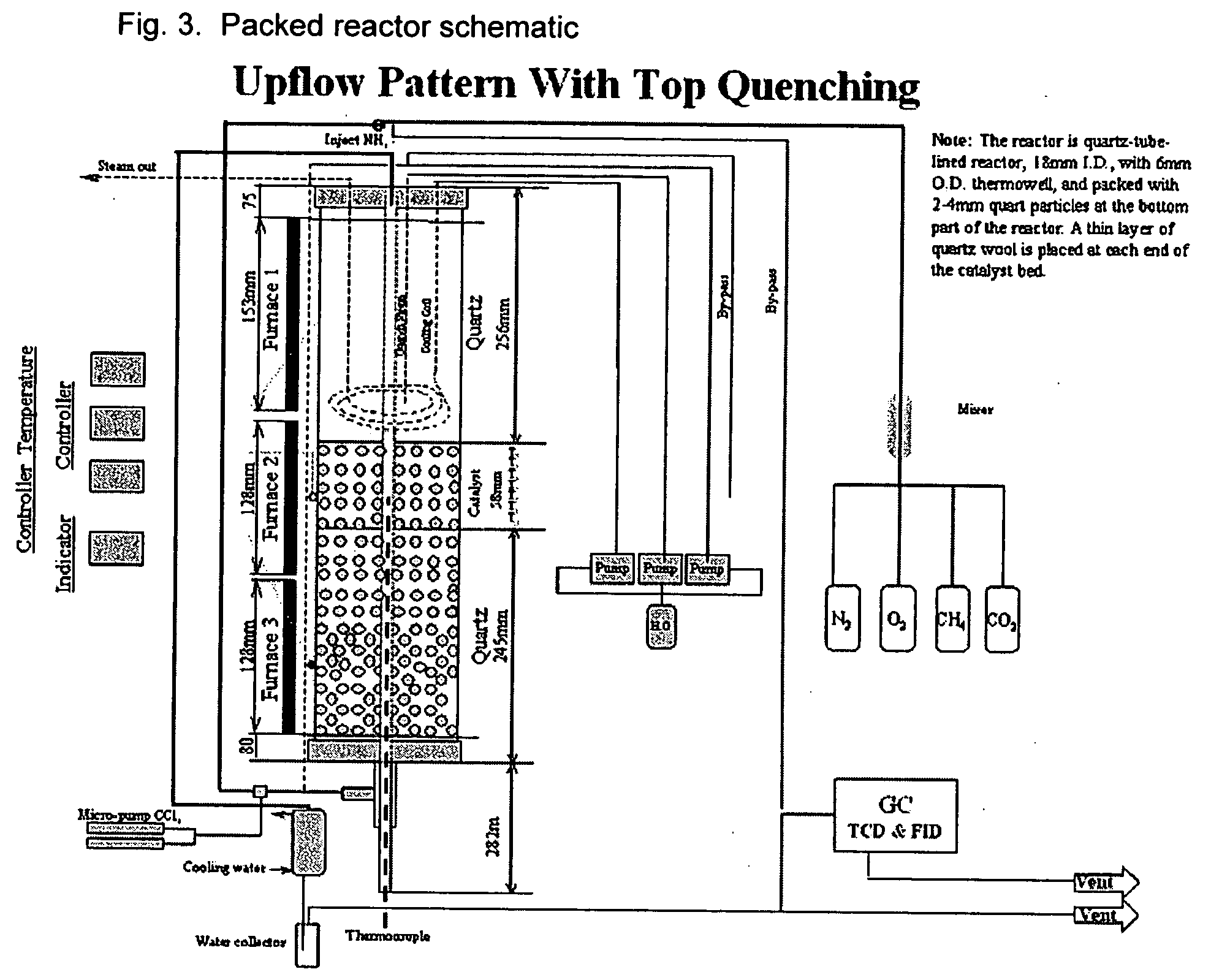Catalyst and method for converting low molecular weight paraffinic hydrocarbons into alkenes
a technology of paraffinic hydrocarbons and catalysts, which is applied in the direction of physical/chemical process catalysts, metal/metal-oxide/metal-hydroxide catalysts, etc., can solve the problems of high endothermic thermal cracking process for olefin production, high cost of separation from ethylene, and large construction and maintenance of large cracking furnaces
- Summary
- Abstract
- Description
- Claims
- Application Information
AI Technical Summary
Problems solved by technology
Method used
Image
Examples
example 1
Sol-gel Method of Catalyst Production.
[0063] A perovskite catalyst was prepared using the sol-gel technique. The following reagent grade materials were used: TiCl4 (titanium chloride), BaO (barium oxide) and Sm2O3 (samarium oxide) (all from Aldrich, Milwaukee, Wis.). Propanoic acid (Across Chemical, division of Ranbaxy Laboratories, India) was used as the organic acid. The ‘t’ factor for this catalyst formulation was calculated to be within the desired range (approximately=1)
[0064] Twenty-five (25) grams of TiCl4; 14 grams Sm2O3 and 28 grams of BaO were placed in separate glass flasks with enough organic acid (between 400 and 1000 ml) to dissolve the salts. Each flask was equipped with reflux condensers. The solutions were heated with an electric mantle until boiling. The mixtures were boiled until the oxides and salts were dissolved, thus forming individual organo-metallic solutions (approximately 2-5 hours at a temperature between 90° C.-140 ° C.).
[0065] The solutions were the...
example 2
Use of Catalyst to Convert Hydrocarbons to Alkenes.
[0082] The catalyst of Example 1 was used to illustrate the effectiveness of a catalyst produced by the sol-gel technique.
The following equipment and materials were used in this example:
[0083] Reactor: The reactor is a quartz-lined, SS304L tube with an inside diameter of 18 mm with a 6 mm outside diameter quartz thermowell at the reactor center. About 10 grams of catalyst was charged to the reactor. The reactor configuration is shown in FIG. 3, in which the catalyst employed is packed between a layer of quartz on the top and bottom of the catalyst bed. Also shown are three separate furnaces used to heat the reactor, with two of the furnaces heating the catalyst bed.
[0084] The reactor was heated with three independent furnaces at the top, middle and bottom sections. The reactor was heated up to 450° C. with nitrogen flow at about 100 ml / min. At 450° C. and above, the reactor was heated up with the reactant mixture, the composit...
example 3
Effect of Reaction Conditions on Conversion of Hydrocarbons to Alkenes.
[0092] Table 3 summarizes a series of experiments, using the reactor configuration described in Example 2. For this series of experiments the GHSV ranged between 1175 and 7037.
[0093] This series of tests was conducted over a range of operating conditions. The data revealed that reaction temperature affects methane conversion and C2 selectivity. If the temperature is too high, such as when it exceeds 900° C., conversion activity decreases due to deactivation of the catalyst. If the temperature is too low, no reaction will occur. The reaction temperature range is from about 750° C.˜825° C. in the catalyst bed. The hotspot temperature in the catalyst bed should be below about 835° C. to protect the catalyst and to maintain the C2+ yield. Lower reaction temperatures give a higher C2 selectivity but a lower methane conversion; higher reaction temperatures give a higher methane conversion but lower C2 selectivity. T...
PUM
| Property | Measurement | Unit |
|---|---|---|
| temperature | aaaaa | aaaaa |
| temperature | aaaaa | aaaaa |
| temperature | aaaaa | aaaaa |
Abstract
Description
Claims
Application Information
 Login to View More
Login to View More - R&D
- Intellectual Property
- Life Sciences
- Materials
- Tech Scout
- Unparalleled Data Quality
- Higher Quality Content
- 60% Fewer Hallucinations
Browse by: Latest US Patents, China's latest patents, Technical Efficacy Thesaurus, Application Domain, Technology Topic, Popular Technical Reports.
© 2025 PatSnap. All rights reserved.Legal|Privacy policy|Modern Slavery Act Transparency Statement|Sitemap|About US| Contact US: help@patsnap.com



